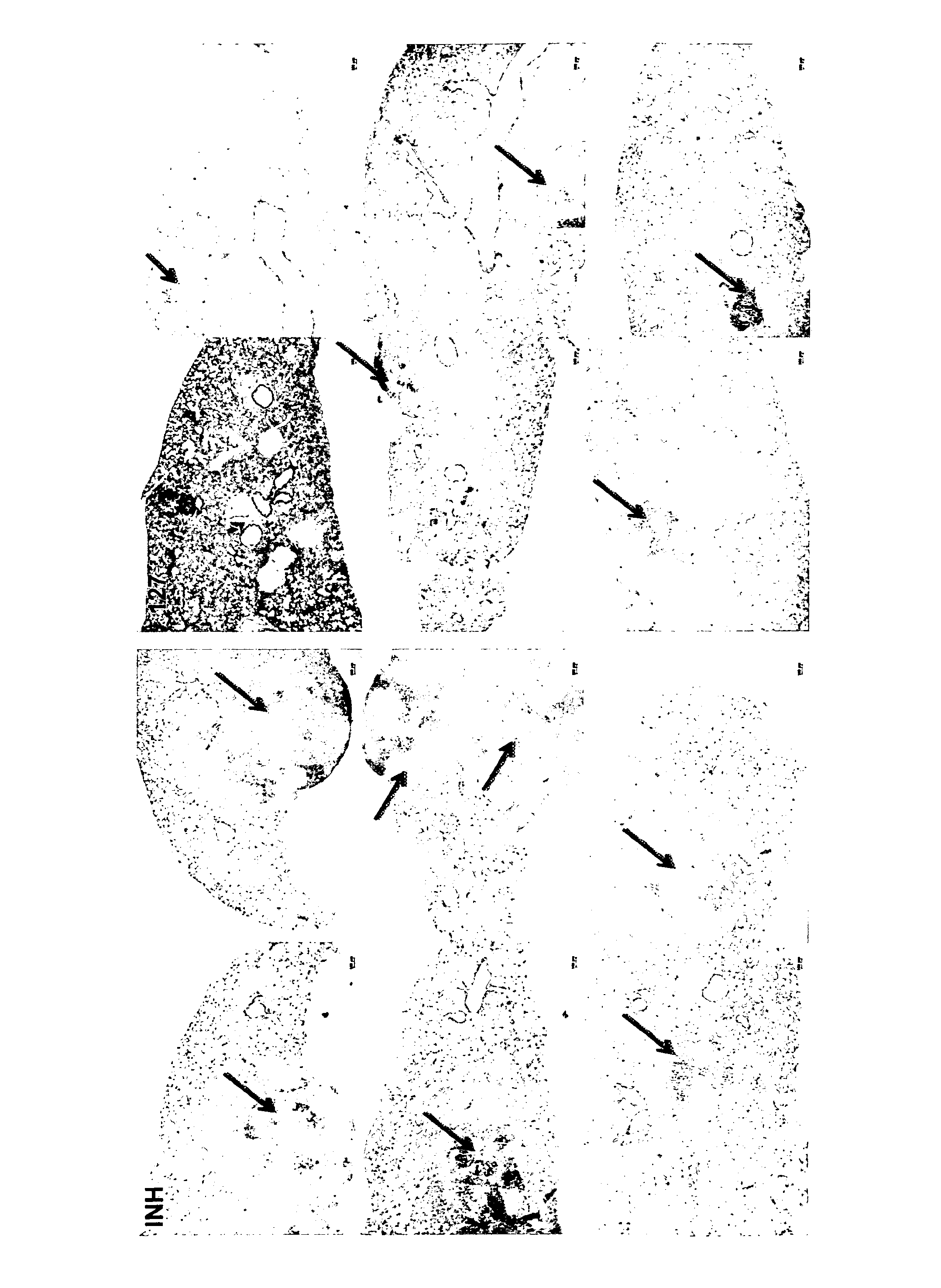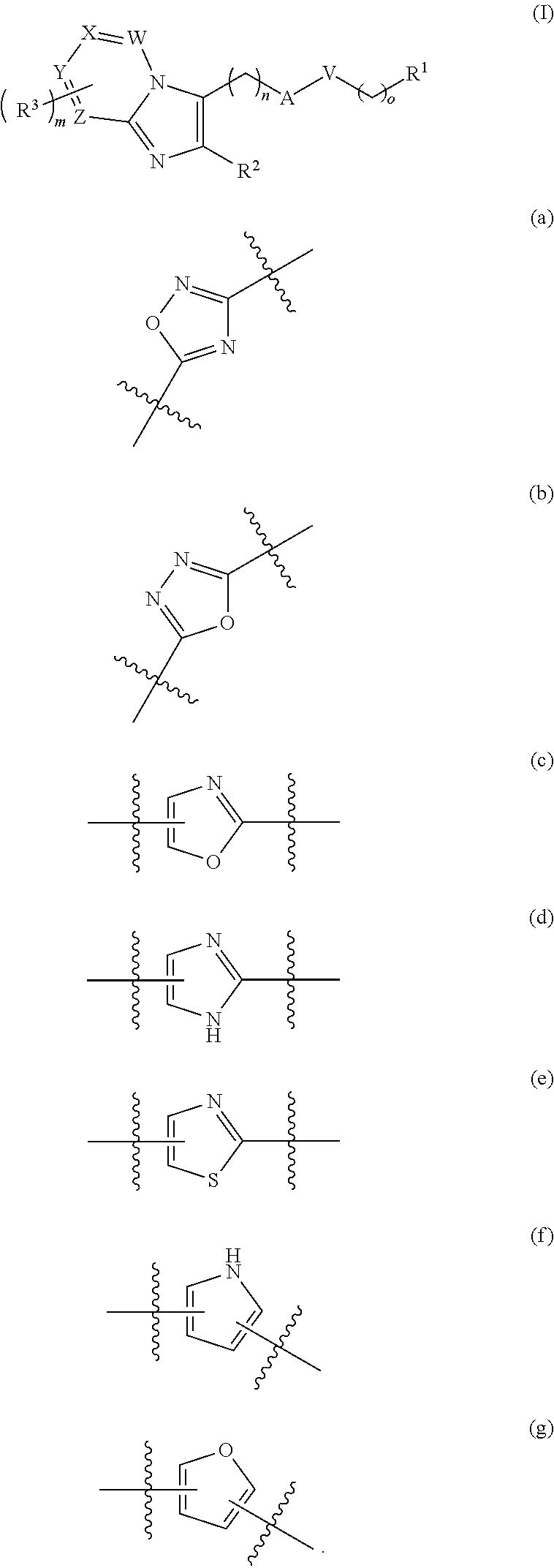Anti-inflammation compounds
a technology of anti-inflammation and compounds, applied in the direction of biocide, cardiovascular disorder, drug compositions, etc., can solve the problems of liver toxicity, inaccessibility to patients with liver disease, and sometimes harm caused by inflammation
- Summary
- Abstract
- Description
- Claims
- Application Information
AI Technical Summary
Benefits of technology
Problems solved by technology
Method used
Image
Examples
example 1
Activity of Compounds Against 5-LO Enzyme
[0095]The activity of compounds against 5-LO were determined by measuring LTB4 (leukotriene B4) levels and / or by a fluorescence method. Both approaches are outlined in more detail below;
LTB4 Measurement:
[0096]Human 5-lipoxygenase (Cayman, Cat#60402) produced in insect cells was pre-incubated with compound for 15 min at RT in incubation buffer (50 mM Tris-Cl, pH 7.4, 2 mM CaCl2, 0.1 mM ATP, 1% DMSO). The enzymatic reaction was started by adding arachidonic acid to a final concentration of 3 uM. After 5 min of incubation at 37° C., the reaction was stopped by heatinactivation at 80° C. for 5 min. LTB4 levels were quantified by using LTB4 EIA kit (Cayman, Cat#520111) as instructed and / or LTB4 levelswere measured with LC / MS / MS using Quattro Premier™ XE tandem quadrupole mass spectrometer equipped with Acquity UPLC system (Waters, Milford, Mass.). The method was slightly modified as reported previously (Zweifel et al., 2008, Willey et al., 2008, C...
example 2
Activity of Compounds on Production of LTB4 in PBMC
[0101]Frozen human PBMC (peripheral blood mononuclear cells, AllCells, Cat#PB006F) was diluted 50 times with fresh culture media (RPMI 1640 supplemented with 10% FBS, 2 mM L-alanyl-L-glutamine). Cells were harvested by centrifugation and resuspended in fresh culture media to a concentration of 5×106 cells per milliliter. 140 ul of cell suspension was then liquated to each well (96-well plate). After incubation at 37° C. for 1 hr under 5% CO2, 10 ul of serially diluted compounds (in 100% DMSO) and 10 ul of arachidonic acid to a final concentration of 30 uM were added and further incubated for 1 hr at 37° C. for 1 hr under 5% CO2. Then, inducers, such as A23187 (Ionophor), sodium arsenite, sodium chloride and / or Anti-DNP IgE, were added in a volume of 40 ul and cells were incubated at 37° C. for 1 hr under 5% CO2 for 30 min. Culture supernatant was harvested by centrifugation and LTB4 levels were quantified using LTB4 EIA kit (Cayman,...
example 3
In Vivo Anti-Inflammation Activity in a Murine Model
[0103]Previously, the imidazopyridine derivatives have demonstrated in vivo activity against Mycobacterium tuberculosis (TB). Histopathological evidence demonstrated that these compounds, in addition to having anti-TB activity, also demonstrated anti-inflammatory activity.
[0104]The effect of compound 127 on TB-infected mice was compared to that of the reference compound Isoniazid (INH). 8-week old female BalbC mice were infected with 6×105 M. tuberculosis H37Rv via intranasal instillation. Mice were sacrificed at day 1 to control the number of CFU in the lungs. In the acute model of infection, mice were treated for 4 weeks, starting at day 1. Compounds were freshly dissolved in a 0.5% methylcellulose solution and administered by oral gavage 5 times / week. Bacterial load was assessed in lungs after homogenizing the organs in 1×PBS. Serial dilutions of organ homogenates were spread on Middlebrook 7H11 plates and CFU were determined af...
PUM
| Property | Measurement | Unit |
|---|---|---|
| particle size | aaaaa | aaaaa |
| particle size | aaaaa | aaaaa |
| particle size | aaaaa | aaaaa |
Abstract
Description
Claims
Application Information
 Login to View More
Login to View More - R&D
- Intellectual Property
- Life Sciences
- Materials
- Tech Scout
- Unparalleled Data Quality
- Higher Quality Content
- 60% Fewer Hallucinations
Browse by: Latest US Patents, China's latest patents, Technical Efficacy Thesaurus, Application Domain, Technology Topic, Popular Technical Reports.
© 2025 PatSnap. All rights reserved.Legal|Privacy policy|Modern Slavery Act Transparency Statement|Sitemap|About US| Contact US: help@patsnap.com



